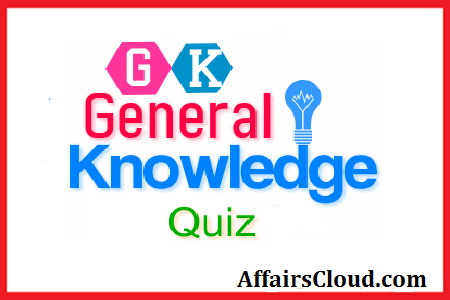Hello Aspirants.
Welcome to Online General Knowledge section in Affairs cloud, which is important for all the competitive exams. We have created Some questions related to Indian GK(Indian Economy) !!!
Click Here To Attend Static GK Quiz
- Which of the following is the wholly-owned subsidiary of the Reserve Bank of India ?
1.DICGC
2.NHB
3.NABRAD
4.All of these
5.None of theseAnswer – 4.All of these
Explanation :
DICGC, NABRAD and NHB are the wholly-owned subsidiary of the Reserve Bank of India - In BRBNMPL, R stands for
1.Reserve
2.Rural
3.Regulator
4.Recruit
5.None of theseAnswer – 1.Reserve
Explanation :
The Reserve Bank established BRBNMPL(Bharatiya Reserve Bank Note Mudran Private Limited) in February 1995 as a wholly-owned subsidiary to augment the production of bank notes in India and to enable bridging of the gap between supply and demand for bank notes in the country. - Which of the following is the regulator of Commodity Market ?
1.SEBI
2.FMC
3.RBI
4.Government
5.None of theseAnswer – 2.FMC
Explanation :
The Forward Markets Commission (FMC) is the chief regulator of commodity futures markets in India. - ___________ is the largest credit rating agency in India
1.ICRA
2.ONICRA
3.FITCH
4.CRISIL
5.None of theseAnswer – 4.CRISIL
Explanation :
CRISIL is the largest credit rating agency in India, with a market share of greater than 60%. It is a full service rating agency offering its services in manufacturing, service, financial and SME sectors. - Which rating agency is established for rating of SMEs in India ?
1.Moody’s
2.SMERA
3.ICRA
4.CARE
5.None of theseAnswer – 2.SMERA
Explanation :
SMERA is the rating agency exclusively established for rating of SMEs. SMERA is the country’s first Rating agency that focuses primarily on the Indian MSME segment. SMERA has completed 7000 ratings. - The headquarters of ONICRA is located in
1.Mumbai
2.New Delhi
3.Guragon
4.Ahmedabad
5.None of theseAnswer – 3.Guragon
Explanation :
ONICRA Credit Rating Agency of India Ltd. was established in the year 1993. ONICRA Credit Rating Agency of India Ltd is regarded as one of the prominent credit assessment service providers in India. - The headquarters of Insurance Regulatory and Development Authority of India (IRDAI) is shifted to Hyderabad from ____________
1.Ahmedabad
2.Mumbai
3.New Delhi
4.Bengaluru
5.None of theseAnswer – 3.New Delhi
Explanation :
The Insurance Regulatory and Development Authority of India (IRDAI) is an autonomous, statutory agency tasked with regulating and promoting the insurance and re-insurance industries in India.[2] It was constituted by the Insurance Regulatory and Development Authority Act, 1999,[3] an act of Parliament passed by the government of India.The agency’s headquarters are in Hyderabad, Telangana, where it moved from Delhi in 2001 - The central bank of India, RBI has how many local boards ?
1.4
2.3
3.2
4.6
5.None of theseAnswer – 1.4
Explanation :
RBI has four local boards in New Delhi, Mumbai, Kolkata and Chennai - What is VRR ?
1.Ratio of current reserve amount & capital amount
2.Amount is used when the bank become insolvent.
3.Ratio of amount are always fluctuating or changing.
4.All of these
5.None of theseAnswer – 3.Ratio of amount are always fluctuating or changing
Explanation :
VRR (Variable Reserve Ratio): – These are those ratios whose amount are always fluctuating or changing. Banks salary is “total deposits” or “net demand and time liabilities”. Total deposits are fluctuating calculated on daily basis and checking on a quarterly basis. - Coins can be issued up to the denomination of ____________as per the Coinage Act, 1906.
1.Rs.1000
2.Rs.100
3.Rs.10
4.Rs.10000
5.None of theseAnswer – 1.Rs.1000
Explanation :
Coins in India are presently being issued in denominations of 10 paise, 20 paise, 25 paise, 50 paise, one rupee, two rupees and five rupees. Coins upto 50 paise are called ‘small coins’ and coins of Rupee one and above are called ‘Rupee Coins’. Coins can be issued up to the denomination of Rs.1000 as per the Coinage Act, 1906.
AffairsCloud Recommends Oliveboard Mock Test
AffairsCloud Ebook - Support Us to Grow
Govt Jobs by Category
Bank Jobs Notification



